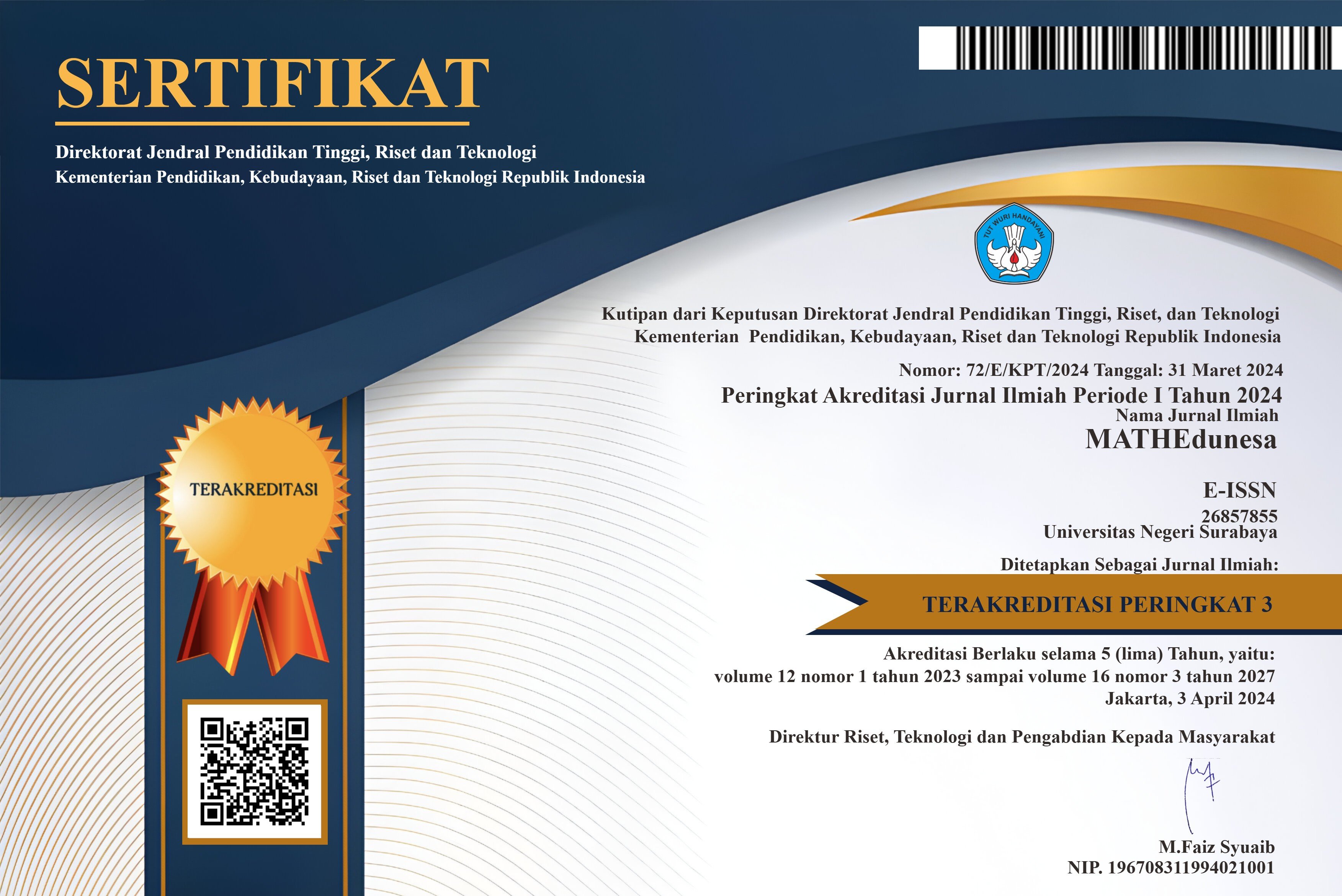PENALARAN ANALOGI SISWA SMA KELAS XI DALAM MEMECAHKAN MASALAH BARISAN DAN DERET DITINJAU DARI GAYA KOGNITIF REFLEKTIF-IMPULSIF
DOI:
https://doi.org/10.26740/mathedunesa.v7n2.p214-220Downloads
Download data is not yet available.
Downloads
Published
2018-06-05
Issue
Section
Articles
 Abstract views: 148
,
Abstract views: 148
, PDF Downloads: 139
PDF Downloads: 139




